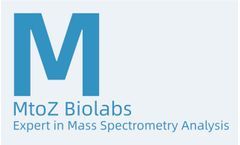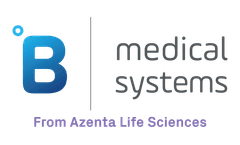Blood Cell Articles & Analysis: Older
77 articles found
The primary focus is on harnessing this technology for modifying primary T cells, a type of white blood cell crucial for the immune response. This approach has opened new avenues for immunotherapy, providing hope for treating conditions like cancer, autoimmune disorders, and genetic diseases. Understanding Primary T Cells Primary ...
Sleep apnea is a sleep disorder that is characterized with snoring and frequent interruptions in breathing, when asleep. That impacts quality sleep and puts the individual at risk of health issues. Though CPAP therapy is considered gold standard in treating sleep apnea, there are a multitude of vitamins and minerals that can help you get better sleep by addressing factors like muscle relaxation ...
They are synthesized and secreted by a range of immune cells, including monocytes, macrophages, T cells, B cells, and natural killer (NK) cells, as well as certain non-immune cells like endothelial cells, epidermal cells, and fibroblasts. Cytokines are produced in response to ...
Discover how matched tumor-normal sequencing can help clinical researchers detect the somatic origin of variants with certainty. In the era of precision oncology, it has become increasingly common for patients diagnosed with cancer to undergo tumor sequencing. Identifying the mutations that make up a tumor’s genomic landscape can help guide selection of targeted therapies and inform ...
This enzyme is known for its ability to degrade elastin, a key protein that provides elasticity and resilience to tissues such as skin, lungs, and blood vessels. Understanding the functions and implications of elastase is crucial in biochemistry and medicine, as it has a significant impact on both health and disease. The Biological Function of Elastase Elastase is primarily ...
They are generally proteins or polysaccharides found on the surface of pathogens, such as viruses, bacteria, or cancer cells. In the environment of cancer, antigens may be specific to tumor cells and are known as tumor-specific antigens (TSAs) or tumor-associated antigens (TAAs). Antibodies, also known as immunoglobulins, are proteins produced by ...
The feasibility of using blood samples for histone modification research is evident. Blood contains various cell types, including red blood cells, white blood cells, and platelets. For histone modification research, the focus is usually on white blood ...
Imagine tiny spheres, smaller than a red blood cell, glowing as they navigate the labyrinthine corridors of the human body. ...
Imagine tiny bubbles, smaller than a red blood cell, carrying powerful medicines directly to diseased cells. This isn't science fiction, it's the cutting edge of drug delivery with drug-loaded liposomes. ...
Cytokines are a broad class of tiny proteins that are essential for controlling inflammation and immunological responses. Numerous cell types, including fibroblasts, endothelial cells, immunological cells, and epithelial cells, produce these signaling molecules. ...
Typically, this cell-specific uptake is mediated by ligand-receptor interactions, but recent research has found that this interaction can also be achieved by altering the lipid structure within the LNP. 1) White blood cell-targeted LNP In order to achieve cell-specific mRNA therapy for inflammatory bowel disease (IBD), ...
Mesenchymal stem cells are multi-potent stromal cells capable of differentiating into various cell types like osteoblasts (bone cells), chondrocytes (cartilage cells), and adipocytes (fat cells). They were initially identified in the bone marrow, but have since been found in various other tissues ...
Bleeding disorders, a collection of conditions that prevent blood from clotting correctly, can be life-threatening. They’re caused by issues such as aberrant platelets, abnormal clotting proteins, or problematic blood vessels. ...
Although having a wider range of applications than non-cleavable linkers, cleavable linkers are more unstable in blood circulation. Cleavable linkers' performance thus hinges on their capacity to effectively distinguish between target cell circumstances and blood circulation conditions.Chemically Cleavable LinkerThere are three main types of ...
They facilitate the recognition and binding of immune cells, such as T cells, B cells, and antigen-presenting cells, during immune responses. ...
Cytokines Backgrounds Cytokines are proteins synthesized and secreted by immune cells such as monocytes/macrophages and certain non-immune cells such as endothelial cells, epithelial cells, and fibroblasts, in response to stimulation. ...
Proteins or lectins that bind carbohydrates may recognize the particular oligosaccharides and provide some useful information for cell recognition depending on the oligosaccharide binding. An important example of oligosaccharide cell recognition is given as the role of glycolipids in blood type determining. Various blood types ...
Common side effects that Verzenio may cause include diarrhea, neutropenia, nausea, abdominal pain, infection, fatigue, decreased red blood cell levels (anemia), loss of appetite, vomiting, headache. Serious side effects include diarrhea, neutropenia, liver Examination of blood and coagulation (deep vein thrombosis / pulmonary embolism). ...
Tumors and Blood Vessel Growth Tumor, as an abnormal mass of cells, has blood vessels of various sizes that can be seen everywhere on the surface and deep within it. Nutrients for life are continuously supplied to the depths of tumor cells through these blood vessels. As the tumor continues to grow, nearby ...
Among them, gB is the main immunogenic protein, which is expressed in mammalian cells, causing cell fusion and polykaryon formation, and is necessary for virus replication; gD plays a major role in the firm adsorption of viruses and cells. ...















